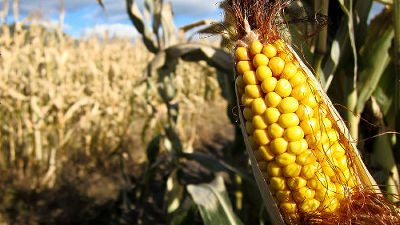An experiment to roast chili pepper with sunlight to reduce carbon dioxide will be released, making it possible to reduce annual emissions for 1700 cars

In the
Using the power of the sun to roast green chile – LabNews
https://www.sandia.gov/labnews/2022/06/30/using-the-power-of-the-sun-to-roast-green-chile/
Green chili, a national dish that has become a staple in New Mexico, requires roasting chili peppers during the cooking process. Sandia National Laboratories (SNL) reported that the use of propane gas to roast chili peppers would produce about 7,800 tons of carbon dioxide in New Mexico alone in one season. This is equivalent to the annual emissions of 1,700 cars.
So Ken Armijo, a researcher at SNL's solar thermal test facility and a native Texas chili farmer, experimented with roasting chiles in the sun as an 'environmentally friendly' way to roast green chiles. I did. In the green chile experiment, the focus was on whether a food product that requires high temperature roasting in the sun would produce results comparable to traditional propane gas roasting.
Mr. Armiho set up a steel drum chili roaster on the roof of the solar thermal test facility, which is about 60 meters high, and tried to cook green chili donated by his father, a Chilean farmer. By using 38 to 42 heliostats , which are used to collect sunlight, the temperature of the entire roaster is over 900 degrees Fahrenheit (approximately 482 degrees Celsius), which is comparable to roasters using conventional propane gas. , was able to be kept uniform, Armiho said.
The person on the right in the photo below is Mr. Armiho.

In fact, the sun-roasted chiles took slightly longer than those roasted in a propane roaster, but the flavor was described by the majority of the 14 green chile lovers as 'better than the Provengas-roasted chiles.' It became a workmanship that pushes the stamp of approval. According to Armiho, he believes that sun roasting can be done faster than propane gas roasting because it takes longer to avoid burning. Furthermore, Mr. Armiho said, ``Roasting with propane gas can not efficiently heat all the chili piled up because it gets heat only where the burner is.On the other hand, roasting with sunlight It is possible to heat the entire roaster evenly, so it is not only environmentally friendly, but it is also possible to roast chili faster and with better quality,” argues the benefits of solar roasting. I'm here.

When comparing propane gas roasting with solar roasting, it was found that 2.68 pounds (about 1.2 kilograms) of green chili can reduce greenhouse gases by 2.68 pounds (about 1.2 kilograms). This is the equivalent of planting 130,000 seedlings each year and growing them for 10 years if the entire state of New Mexico switched from propane to solar roasting chili.
This solar roasting system can be used not only for green chillies, but also for soybeans, grains, coffee, etc., by adjusting the amount of sunlight collected and regulating the temperature. On the other hand, Mr. Armiho says, ``It is not realistic to build a heliostat tower and equipment just for roasting foods such as green chili, coffee, and grains.'' Therefore, the research team of Mr. Armiho and others is looking for a way to convert this roasting system into a small and easy product that can be used to roast green chili at home.
Experimental results were shared at the International Conference on Energy Sustainability in Philadelphia, Pennsylvania, July 11-13, 2022.
16th International Conference on Energy Sustainability - ES 2022

Related Posts:







